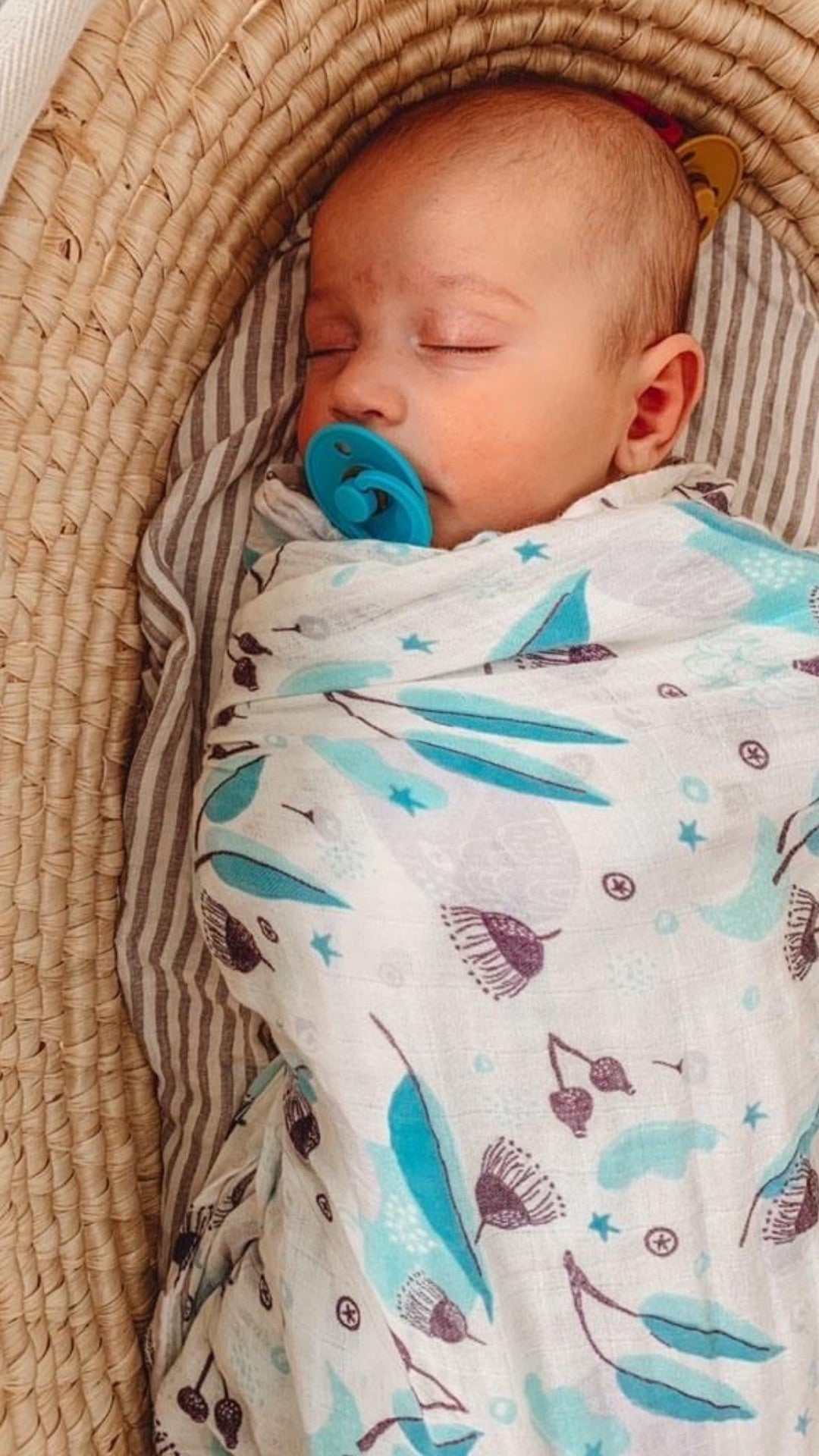Swaddling: When and how to stop swaddling your baby.

Want to know when to stop swaddling your baby? Or already committed to dropping the swaddle and wanting to know how it should go down? Read this first.
So you’ve been swaddling babe for months, enjoying those longer stretches of sleep created by mimicking the sense of safety and security baby feels in the womb (hello, sanity, I’ve missed you), but your baby is getting older and you might be thinking ‘when’s the best time to stop swaddling?’, and ‘is it still safe to swaddle my baby?’
Every baby is different – but removal of a baby wrap or swaddle occurs between 3-6 months. A few key milestones happen during this period that will change baby’s need to be wrapped, we’ve outlined these below.
The first is the lessening and eventual cessation of the Moro Reflex (the reflex that makes your baby ‘jolt’ themselves awake) – this occurs at around three months and is one of the main reasons for swaddling. If you have a fairly active baby who seems keen to be un-swaddled, they might be ready to drop the swaddle from this early age.
The second is the emergence of new strength and motor skills – you might find baby is constantly getting out of their swaddle or starting to move around in their cot a lot. Very active babies may Houdini out of the swaddle and wake themselves (and you) up in the process – so it could be making things worse.
It’s definitely time to drop the swaddle when your baby is rolling. Once baby is able to roll from side to side and front to back, a swaddle can become a risk. You don’t want baby flipping over in the night with their arms pinned down.
But dropping the swaddle isn’t always easy. We’ve also outlined our top tips for making the transition to ARM FREEEEDOM a smooth one!
- Buy wine. But seriously, babe might be unsettled for a while
Warning: you might go from those 7 hour (or longer) stretches to wake ups every 40 mins. It pays to learn some gentle settling techniques to help baby learn to go back to sleep on their own.
And if all else fails, this organic wine from Temple Breuer has no preservatives (the nasties that cause hangovers).
- Go slowly
If you’re using a muslin wrap, try wrapping for a few nights with just the one arm out (wrap as you would normally and but wrap one side under the arm), then try both arms out. Finally, go the whole shebang.
Some baby swaddles and wraps are designed to take you through this transition. We love the Love to Dream range.
Trying out sleeping without a swaddle or wrap in the daytime is a great place to start too!
- Switch to a sleeping bag
Once baby is out of a swaddle, they’ll love the cosy and secure feeling of a safe sleeping bag. It also means baby won’t kick off their blankets and get cold overnight.
- Give those hands something to do
Busy hands are hands that will wake your baby up! Give them something soft, safe and cosy to hold onto. A baby safe comforter like a Kippin is the perfect friendly night time companion that will help them self-soothe back to sleep without waking you!
- Keep up the routine
Routine doesn’t have to mean doing everything according to the clock! Think of it more like a pattern of consistent tools and events that are used every time you want baby to have a sleep.
That might look like this: shower/bath, brush teeth, read a story, say goodnight to cuddly friends, pop down in cot.
- Don’t look back
Any transition is going to be hard! It absolutely sucks when you’re going through it and your eyeballs are falling out of your head, but stick with it – stopping and starting will just prolong the process. Get some extra support if you can, or review earlier post about wine, ha!
Yours in sleep - Kippins

